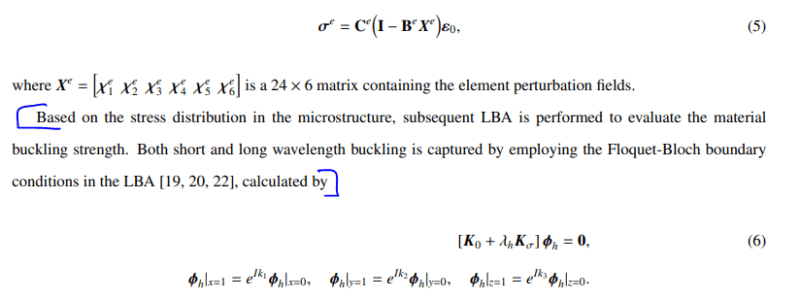I don't think this is the best place for this question... but floquet-bloch b.c.s are used in quantum mechanics to solve schrodingers equation with a periodic potential. You can think of the crystalline structure of a metal as having periodic boundary conditions. Effectively, this allows you to extrapolate out from a single crystal (or periodic element), the behavior on a -macro scale. By looking at a single element, you can see the effects of modes that are larger in span than a single element. Practically, this means you can exploit the periodicity to simplify the calculations (and reduce the meshed region to a single period).




